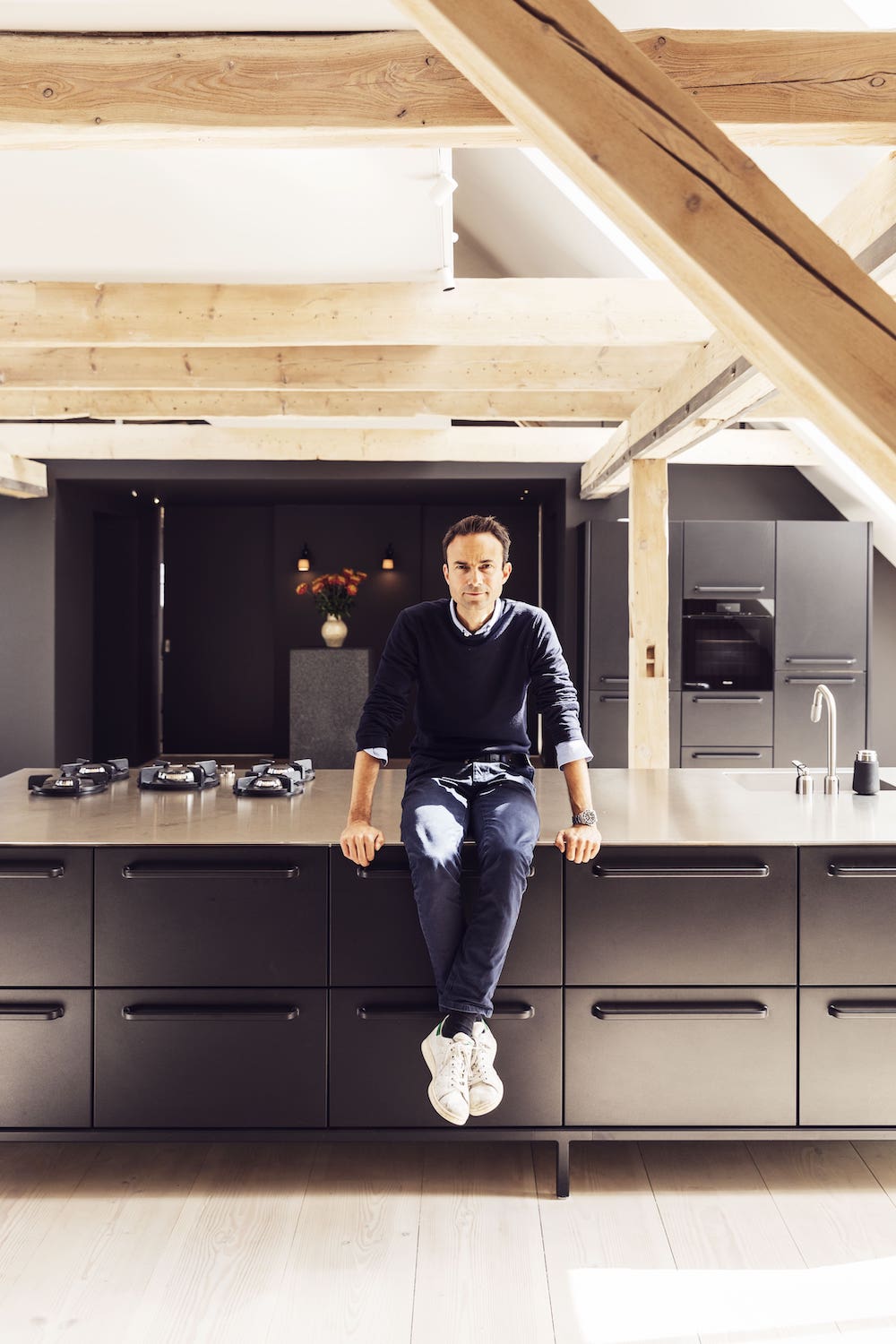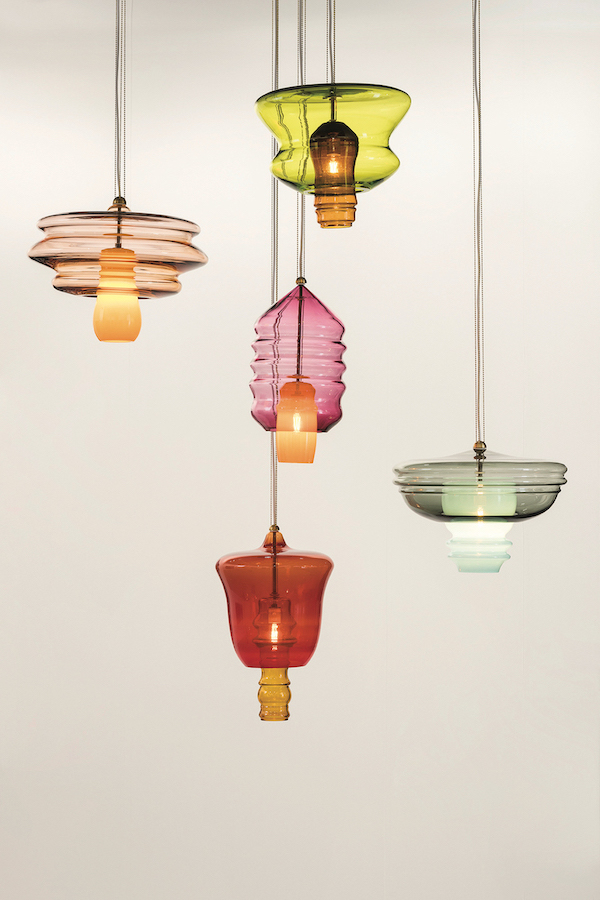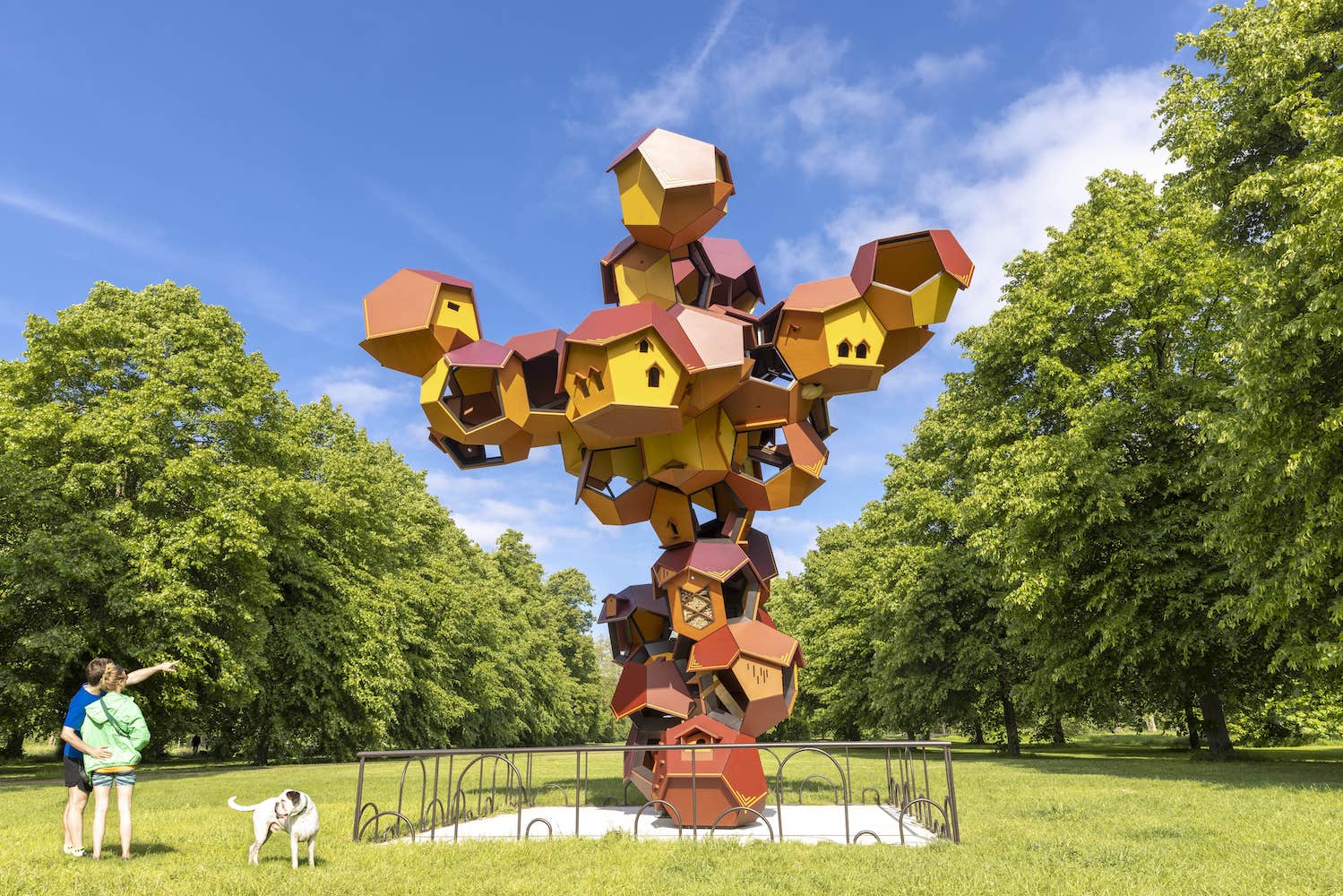Vipp’s CEO Introduces New Sustainability Agenda
The story of the Danish design brand Vipp has humble beginnings. In 1939, Holger Nielsen designed a pedal bin in metal for his wife Marie’s hair salon. Its practicality and smart look caught the attention of patrons at the salon, who went on to recommend it to friends and family. Soon the trash can made just for Marie went into production on a much larger scale, eventually becoming the foundation for a third-generation company of home and furniture products, and eventually making its way into the permanent collection of the Museum of Modern Art in New York. Vipp now counts kitchens, home accessories, lighting, tables, chairs, and even hotel concepts within its world. At the center of it all is a commitment to timeless, functional, and smart-looking design. It values the understanding that long-lasting, well-made, reparable products are sustainable in their very nature.
Recently, Vipp’s CEO, Kasper Egelund, looked to push that message of sustainability one step further. Beyond offering clients 10-year warranties on things like the classic Vipp15 bin, they collaborated with the Technological Institute of Denmark to upcycle leftover wood and plastic waste in Vipp’s own production to create the Rubbish bin. The piece not only reuses material that would otherwise not be, but also showcases the beauty and texture of that material, sending a message about its making.
Whitewall spoke with Egelund about the genesis of Rubbish and its implications for more sustainable practices, packaging, and future products.
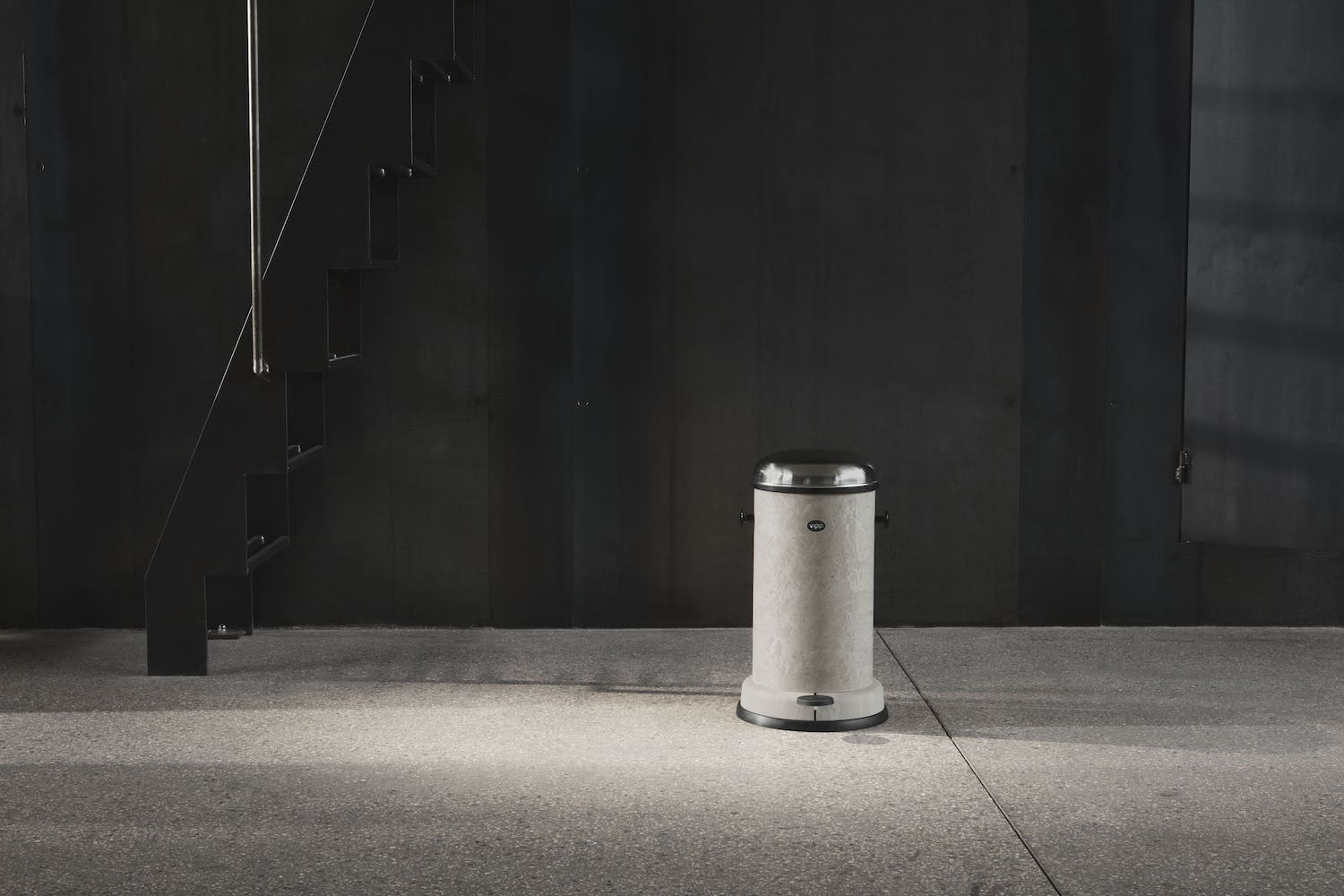
Vipp’s Rubbish bin, courtesy of Vipp.
The Birth of the Vipp Rubbish
WHITEWALL: How did the idea for Rubbish come about?
KASPER EGELUND: The idea for Rubbish came about because we were looking at ways to work towards a greener agenda. And in that process, the Technological Institute of Denmark came to our attention since they work a lot with upcycled materials including plastic and wood. So we entered into a collaboration and partnership with the institute to explore how we could upcycle our leftover waste materials, and out of this came the Rubbish bin made of leftover wood and plastic from Vipp’s own production.
WW: Why did it make sense to create the classic Vipp15 pedal with recycled material, versus another Vipp product?
KE: Vipp started with a bin in 1939, so in a way you could argue that everything we’ve done and do at Vipp is born out of the bin. Today, the bin is a design icon, so rethinking this design object made sense—and was really a no-brainer.
WW: What waste material from Vipp’s production made the most sense to upcycle, and why?
KE: We worked closely together with the Technological Institute to find the right materials to upcycle from our own leftover waste since they are the experts within this field. And in the process, plastic and wood showed out to make most sense to upcycle.
WW: Why was it important for you to keep the natural color of the material?
KE: The color and texture surface of the Rubbish bin turned out to be organic and beautiful. And every bin is unique. We think the Rubbish bin is honest and pure, and you really get to see and feel the materials it is made of, so that also becomes part of the storytelling that people bring with them home.
WW: Vipp is founded on the principle of creating design objects that will last. Do you see Rubbish, like the Vipp15, as something that can be kept for decades, passed from one generation to the next?
KE: Definitely. The new Rubbish bin has passed all testing and has the same long durability as the rest of the Vipp bins in the family. Therefore, we are also offering a 10-year warranty on the Rubbish bin, as we also do with all other bins in our bin portfolio.
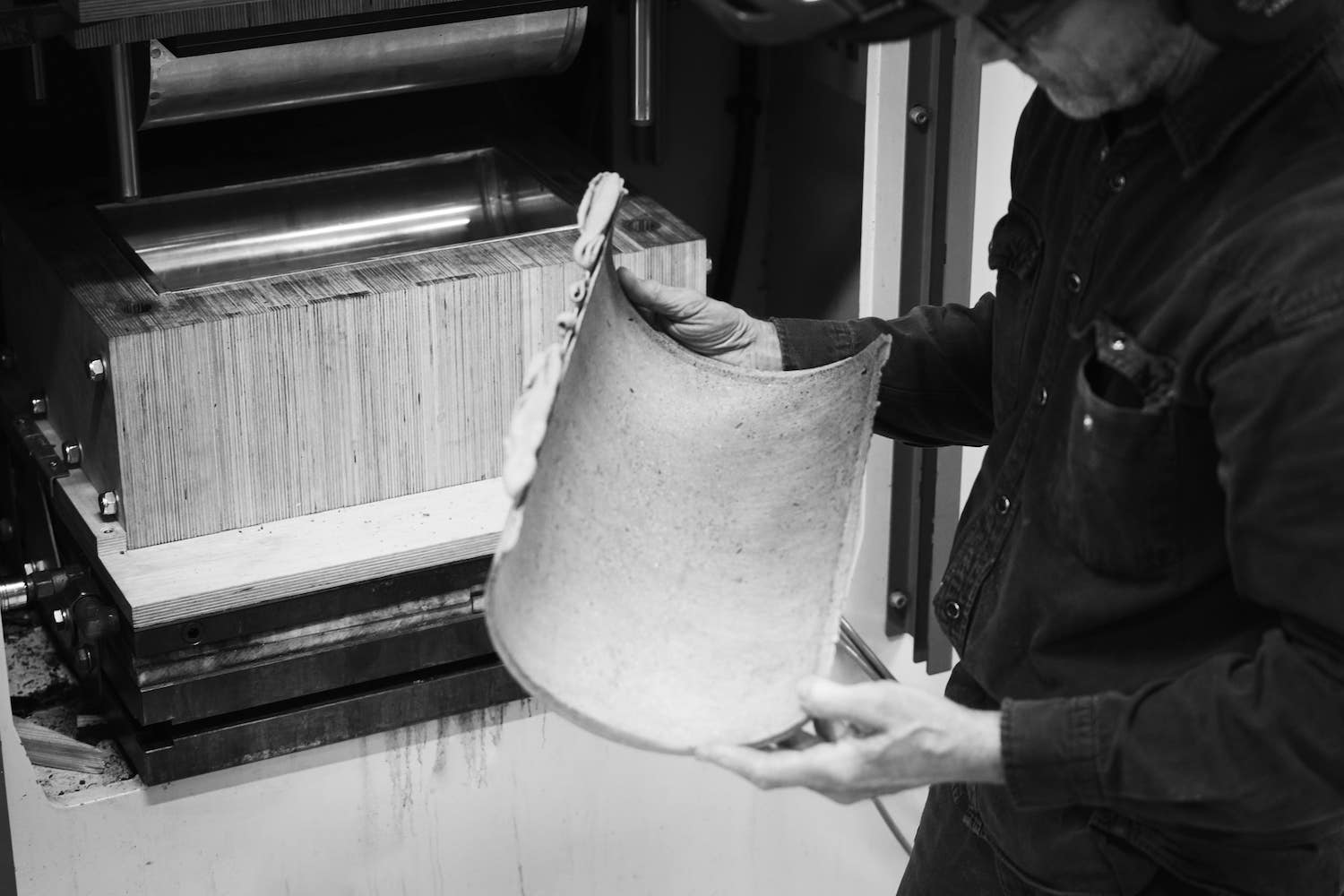
The making of Vipp’s Rubbish bin, courtesy of Vipp.
The Vipp Rubbish Inspires New Sustainable Designs
WW: Is the process by which Rubbish is made something that can be applied to other Vipp design objects?
KE: We are actually looking how we can apply the material from Rubbish to other Vipp design objects, such as a new kitchen design that we are working on at the moment.
WW: Can you tell us about the packaging for Rubbish as well, and how this will be a model for packaging of other products at Vipp?
KE: The packaging of the Rubbish bin has been subject to a redesign towards a more environment-friendly solution. The recycled and recyclable FSC cardboard boxing is from sustainable and controlled sources, and the shift in packaging towards renewability will be copied to our standard collection of five-sized bins and toilet brush.
WW: Can you speak to the idea of “per-use footprint” as it relates to Vipp’s sustainability ethos?
KE: Based on a product’s entire life cycle, the footprint is reduced by continuous use. The per-use footprint is defined by whether you keep a product for decades or just a season or two. The Vipp bin is designed with longevity in mind, even offering a 10-year warranty on the entire bin collection, and buying into durability will save the raw material and energy use related to acquiring new products. The Rubbish bin is crafted in recycled and recyclable materials, meaning that all parts can be decomposed and reused in the distant future.
Vipp has been dedicated to creating timeless, long-lasting design since the first Vipp bins were sold out of a backyard workshop in a Danish suburban town more than 80 years ago. To earn its place in the world, we believe that Vipp products should bring years of joy and value to its owners. A long-lasting product is also a more sustainable product.
A prerequisite for sustaining a product is product reparability. For the original Vipp bin and its new iteration, spare parts are available, intended to maximize product age.
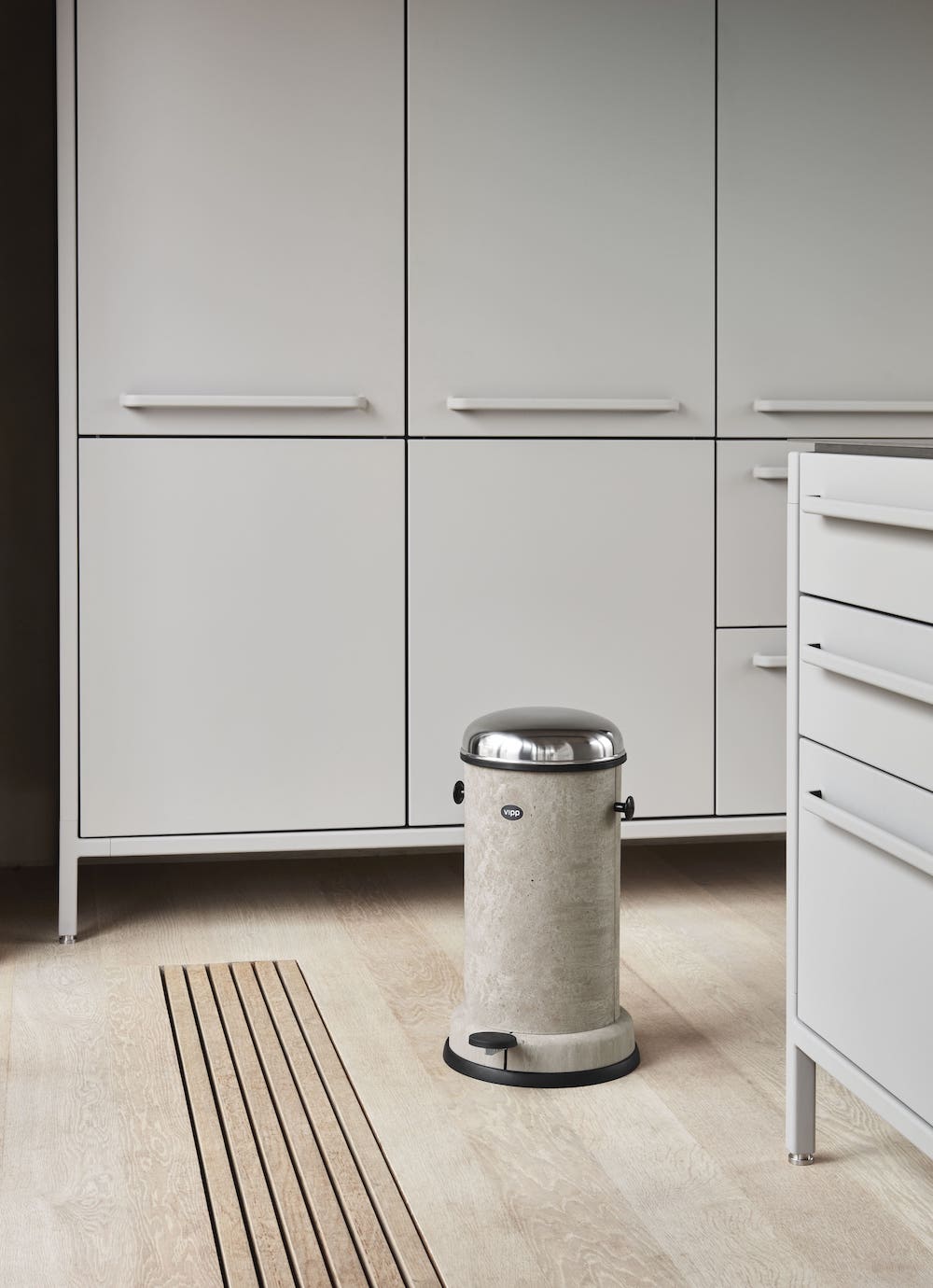
Vipp’s Rubbish bin, courtesy of Vipp.
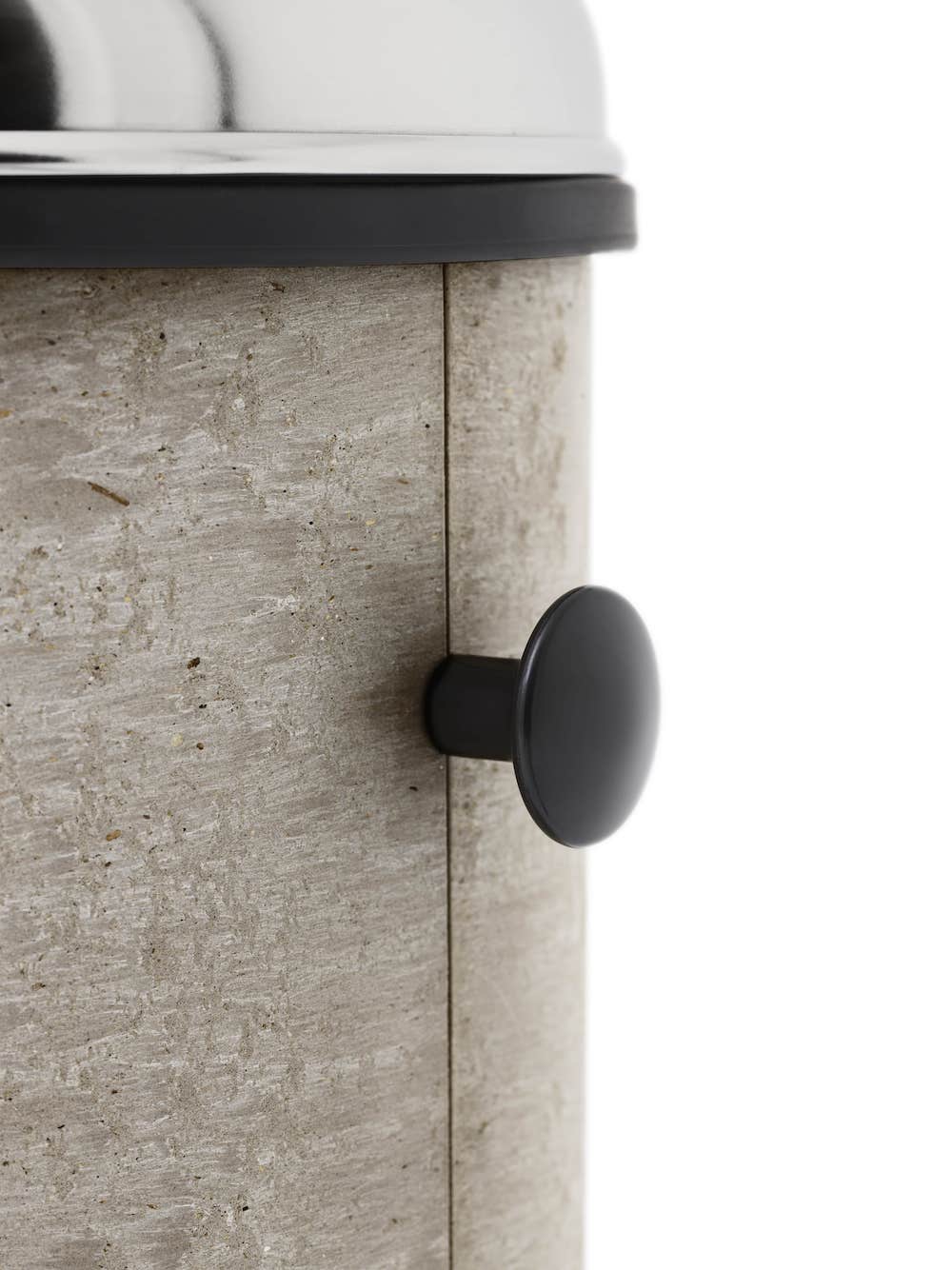
Vipp’s Rubbish bin, courtesy of Vipp.



